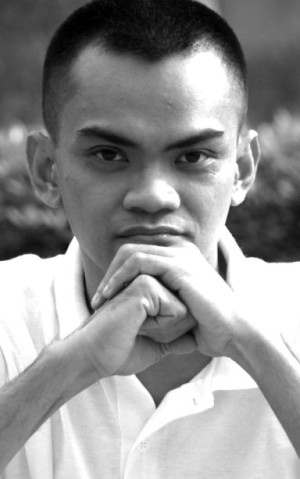
PAREDES
We came last Thursday to the University of the Philippines in Diliman, Quezon City, at the time when the whole campus was still grieving over the loss of its basketball varsity team, the Fighting Maroons, to the Ateneo de Manila’s Blue Eagles in the 2018 finals of the University Athletics Association of the Philippines (UAAP).
Yet, life goes on in the country’s premier state university where people would rather like to think that there are things more worth fighting for than some sports game.
Among them is art.
And as the state of its promotion and pedagogy in the Philippines face more challenges these days with the recent shift to the K-12 system, a group of artists and art educators from different parts of the country gathered here in the UP College of Fine Arts for the second Artways 101, the annual conference of the Council of Visual Arts and Design Educators (Art Dec).
Art Dec was created in 2012 by a group of art educators representing various schools in the country offering fine arts and design programs in the higher education level to discuss how they could respond to the major changes and issues in art instruction brought about by the K-12 program.
They also felt that they needed to discuss how the academe should comply with requirements and standards prescribed by the Commission on Higher Education.
One of the problems was how higher education institutions would have to adapt their curricula and programs to correspond and align with changes in the elementary and secondary level art instruction, particularly in the senior high level.
In the new system that aimed to comply with global standards, senior high students may take up art and design track, where they learn basic art appreciation and techniques, enough skills to pursue an art career even if they choose not to proceed to college.
But if they do so, they will have to enter a curriculum that is supposed to not only widen their skills sets in art and design production but also train them to be “thinking” artists who are responsive to local and global issues on art history, aesthetics, and the various social and political problems affecting art and design practice.
The Art Ways conference is an occasion where art educators from various colleges and universities meet to discuss these issues and take part in workshops that would enhance their own skills as both artists and teachers.
It’s the first time that I attended the Art Ways conference which was held last Thursday and Friday at UP.
This year’s talks delve into native living traditions in Philippine art, art teaching strategies in the age of the online open university, and community-oriented research influenced by trends and theories of contemporary art.
Participants in this year’s Art Ways were also required to join workshops in printmaking, ceramics, laser cutting, and art photography using ancient darkroom techniques.
An exhibit showcasing work by both mentors and participants was also held outside of the conference room.
Organizers of the Art Dec hope that the art educators who took part in the conference will be able to apply what they learned to their own classes once they return to their respective schools.
They also hope that the participants will be able to bring the debates on the various issues of art and art education in the Philippines to their own classrooms or faculty offices.
In this way, they would be able to influence how their policies and programs are shaped to address the changing landscape of the country’s educational system and the social and economic problems it is supposed to address.
Art Dec is still a small group with very little funding and support from the government but it is already making a big contribution in how the art is going to be taught at the colleges as part of the so-called education revolution in the Philippines.